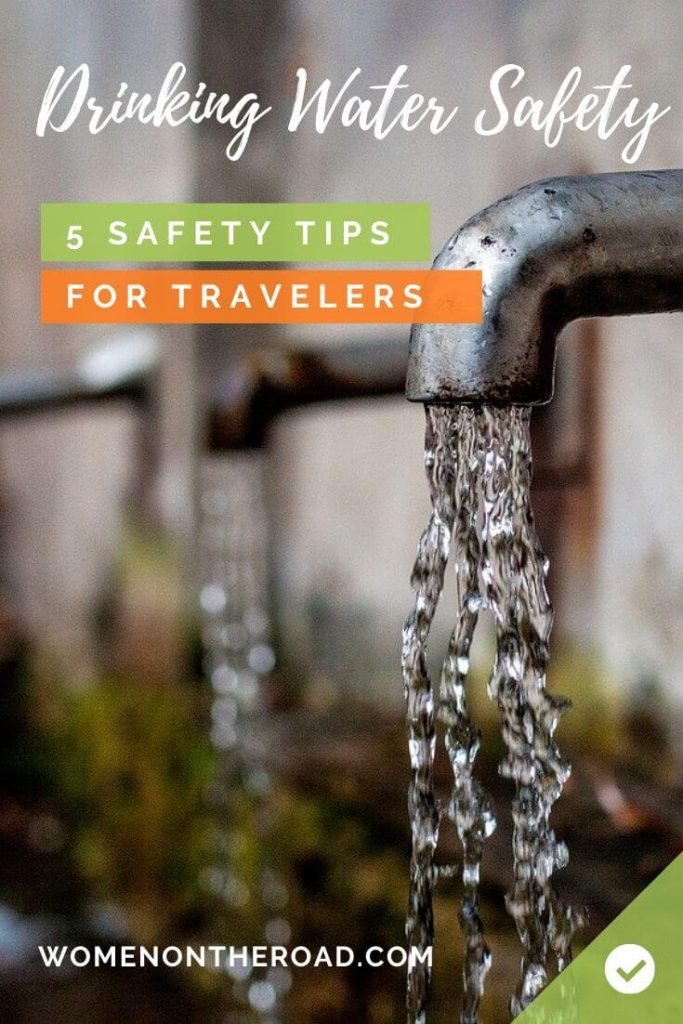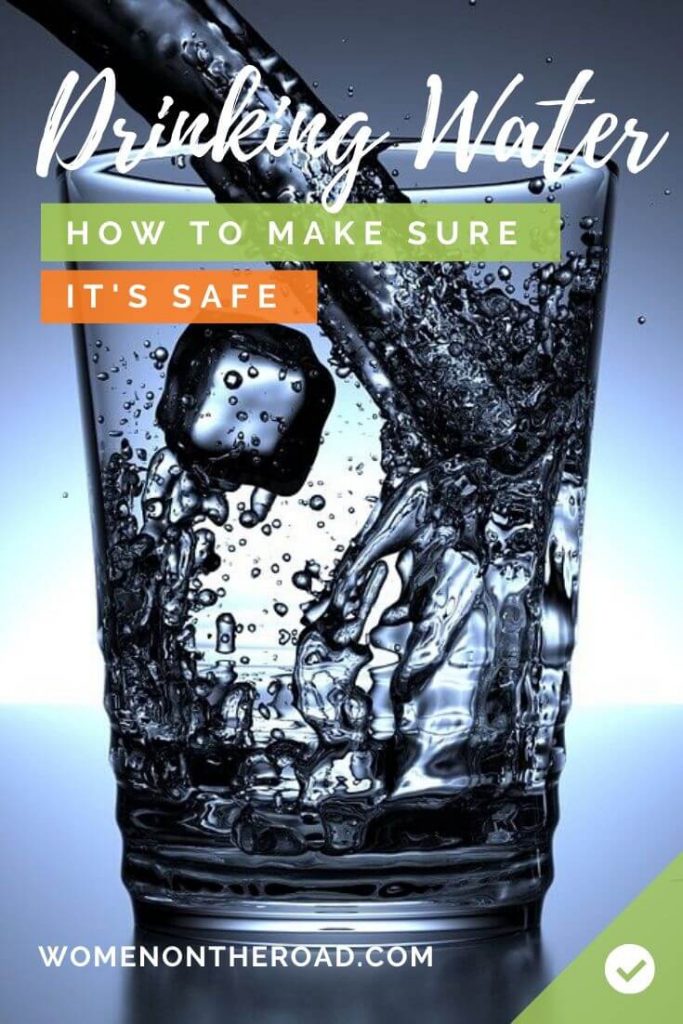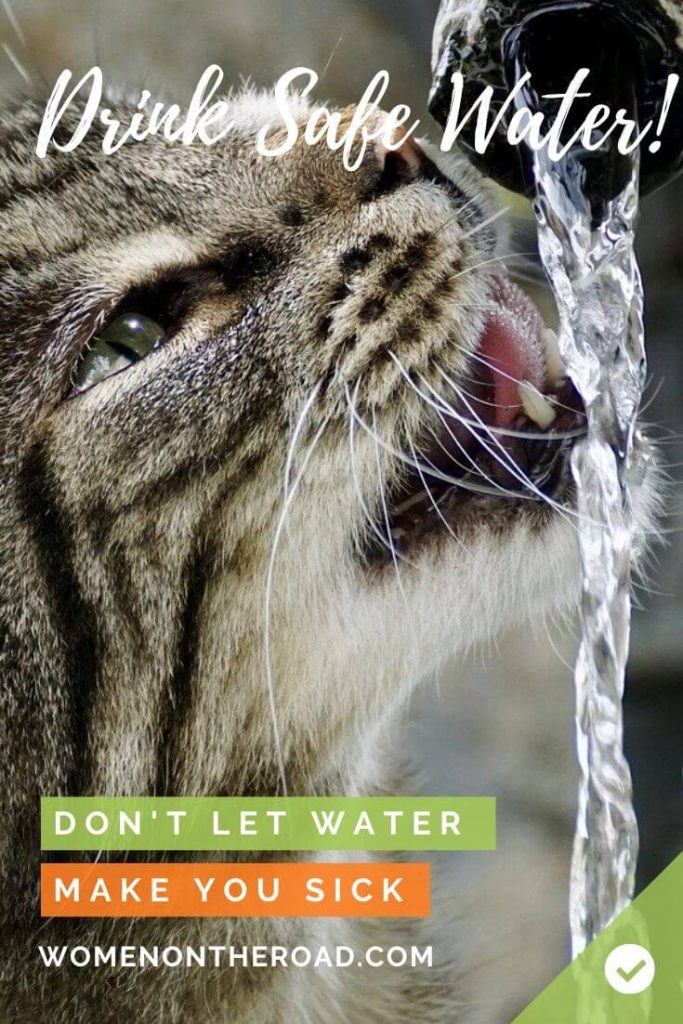Maybe I should have called this page How to avoid Montezuma’s Revenge… although drinking contaminated water can make you far sicker than that.
Drinking water safety: it’s one of those things you might not think about until you’re locked in the bathroom feeling like the world is ending. If you’re ever unfortunate enough to feel like this, you’ll understand why you should drink water that’s guaranteed safe!
Making sure your drinking water is safe is a foundational part of travel, and essential if you want to avoid travelers diarrhea on holiday – you can’t just wing this one.
DISCLAIMER: I am a writer, not a doctor, and none of this is medical advice. I have traveled for 50 years to nearly 100 countries and have gained some experience on what works or doesn’t work for me. I share that experience in this series of articles, which can be your starting point for research. But when it comes to actual prevention, treatment and care, ALWAYS consult a qualified medical practitioner.
IS TAP WATER SAFE TO DRINK? IT DEPENDS WHERE YOU ARE
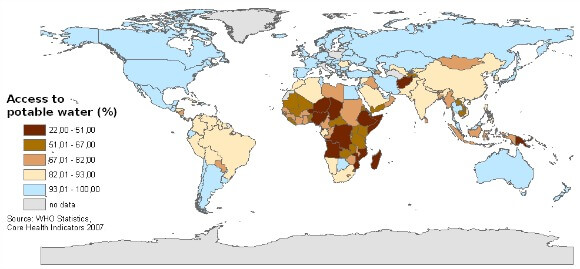
Drinking tap water is deemed unsafe in a number of regions:
- much of Africa,
- most of South and Southeast Asia,
- large chunks of Central and South America.
To confuse things more, you may find perfectly safe drinking water abroad in major cities and resorts but undrinkable water everywhere else.
Always ask someone local, “Is the water safe to drink?”. Or look it up before drinking.
SO WHAT CAN WE DO ABOUT DRINKING WATER SAFETY?
If you have any doubt at all about the tap water, don’t drink it. In fact, don’t drink ANY water you don’t trust.
So – how to make water safe to drink?
There’s obviously bottled water but you can also boil your water, treat it chemically, use UV light on it or filter it physically. Let’s look at these more closely.
1. Drink bottled water
This is often the simplest solution. But it comes at a cost.
Bottled water is expensive, and a plastic drinking water bottle is wasteful.
If you’re traveling solo for two weeks where the water is unsafe, you’ll use at least 21 liter-bottles of water: you’ll drink one liter a day and use the rest for all your other needs.
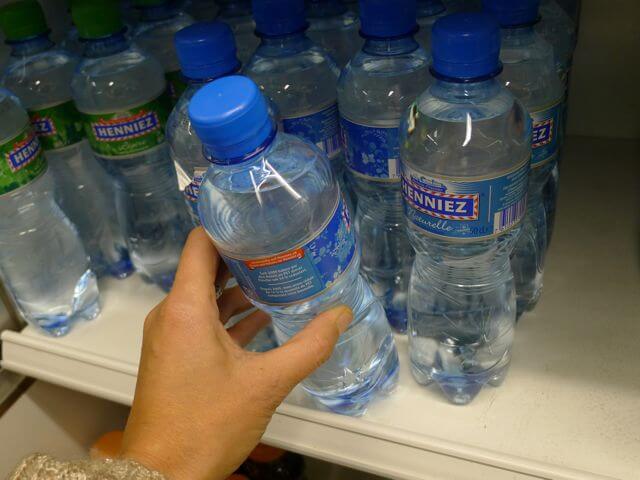
- Plastic pollutes the environment. On a trip to Albania I crossed the breathtaking Lake Komani: it could be heaven for kayakers and canoeists – if it weren’t for so many plastic bottles floating on the surface (although I’m told that there has been some cleaning up).
- All those disposable plastic bottles have to go somewhere. In poor countries with little treatment, they are often dumped on the ground (or in a body of water).
- Your health can suffer because chemicals can leach from plastic (especially if your bottle has been subjected to heat or sunshine).
- In some countries bottled water is counterfeit; bottles are filled with ordinary water and resealed. Ask around: if this is customary, people will know. To be on the safe side, ask your fellow travelers or the reception desk for the safest brands. And check the seal carefully and make sure it’s tamper-proof.
Before treating your contaminated water, make sure you eliminate any sediment in the water by straining and filtering. Choose the cleanest water, preferably flowing, not stagnant.
2. Put the kettle on
According to the experts at the Environmental Protection Agency (EPA) and the Centers for Disease Control and Prevention (CDC), boiling water is the most effective – and simplest – way to make water safe to drink. Bonus: it’s also a cheap option!
Does boiling water make it safe to drink?
Unless you’re drinking from an outdoor source that happens to be downriver from a factory that dumps pollutants in the water, or trying to survive in the aftermath of nuclear radiation, boiling water will make it safe to consume.
The World Health Organization says that any temperature above 158 degrees F (70 degrees C) kills 99.999 percent of bacteria, protozoa, and viruses. Since water starts to boil at 212 degrees F (100 C), by the time it has boiled, it’s good to go.
Does boiling water purify it?
Technically, boiling water sterilizes your water, but it doesn’t magically make muddy water unmuddy or get rid of any unwanted debris like sand or leaves. If you see any weird floaties or your water looks cloudy, you’ll want to filter it too (see number 5 below).
How to boil water for drinking
Any heat source is fine – campfire, gas cooker, or a good old kettle, as long as it can bring your water to a rolling boil.
How long to boil water to drink
One minute is the recommended time to kill all those pathogens. Heat the water until it starts a rolling boil (this is when it’s bubbling furiously) and let it continue for at least one full minute.
If you’re at a higher altitude, increase that to three minutes, as water boils at cooler temperatures the higher you are.
Even though one minute is enough, I don’t take any chances and let it boil plenty – there’s no harm in giving it a few extra minutes to be sure.
Filter the water before boiling it to get rid of any sediment or visible specks. Then let it cool before drinking (skip this step at your own risk – and find out what a tongue blister feels like).
Or why not make a nice cup of tea or coffee with that boiled water?
That said, boiling isn’t always feasible or convenient.
3. Use water purification tablets
If your itinerary includes countries with unsafe drinking water, water purification tablets are a good option to help keep you safe.
Water purification tablets are made from a variety of chemicals:
- silver ions (no taste but traditionally used for water cisterns in boats or campervans)
- chlorine bleach (mostly effective but tastes and smells awful)
- chlorine dioxide (much less yucky and in a pinch can be used in cloudy water)
- iodine (doesn’t kill everything and must not be used over any length of time because it’s harmful to your body).
The problem with iodine and chlorine is that they also exist in strengths never intended for water purification. Using these stronger doses can lead to overdose and death.
To keep yourself safe, use products sold exclusively for water purification and follow instructions to the letter. Do not improvise!
Take note: iodine is dangerous for pregnant women, if you have thyroid problems, and a few other conditions so read up about it.
According to the World Health Organization, 80% of all travel disease is the result of contaminated drinking water.
On occasion I’ve tried tablets like Micropur (chlorine dioxide) or Potable Aqua (iodine). In the case of chlorine dioxide, it’s not instant: you’ll have to add it to the water some time before you drink it.
You’ll use more tablets than you think, so calculate properly: some doctors recommend drinking between 2-6 liters (very roughly 4-12 pints) of water each day so a small pack of tablets won’t go very far and they’re quite expensive.
Some treatment products come in concentrated drops as well. If you have a choice, opt for the tablets – they won’t leak, they’re lighter, and they won’t break so you can carry them around in your pocket.
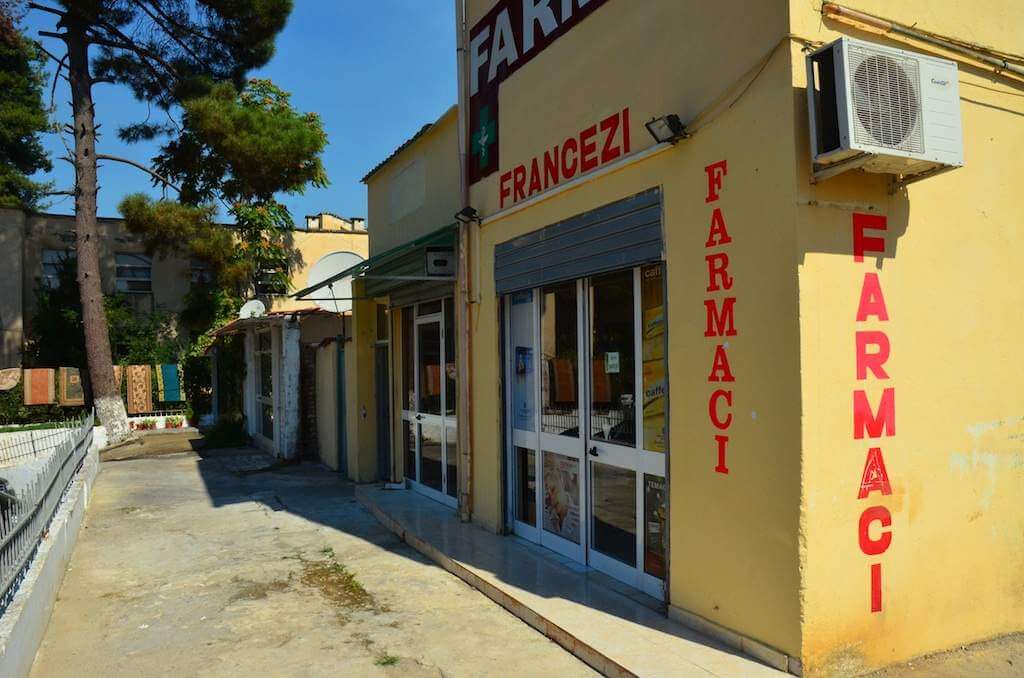
4. Zap those bugs dead with UV light
The top of the line are purifiers that use ultraviolet light, which can get rid of almost anything, even viruses. They don’t use chemicals and they tend to be easy to use.
Several of my travel friends swear by the SteriPEN: you stir clear water with the wand and it kills pretty much everything that’s bad for you. It’s light and easy to carry and uses AA batteries, available almost anywhere. If you’re traveling off the beaten path, play it safe – things do break – also take along a few tablets.
One thing though – it’s a piece of kit so don’t forget to read the instructions! Otherwise you may end up drinking dirty water that will make you sick.
5. Filter water physically
Dying of thirst and have absolutely nothing with which to purify or clean water?
This happened to me in the Brazilian rainforest and here’s what I did.
I had no way of boiling water so I took a chance. Desperate with thirst, I used my T-shirt to filter water straight from the Amazon River.
I was lucky and nothing happened but I shudder when I think of it because I could have been extremely ill. Remember, the T-shirt will only filter out the mud and sticks, not the bugs or bacteria. The water is still bad – it just looks a little less bad.
Make sure this never happens to you: be equipped.
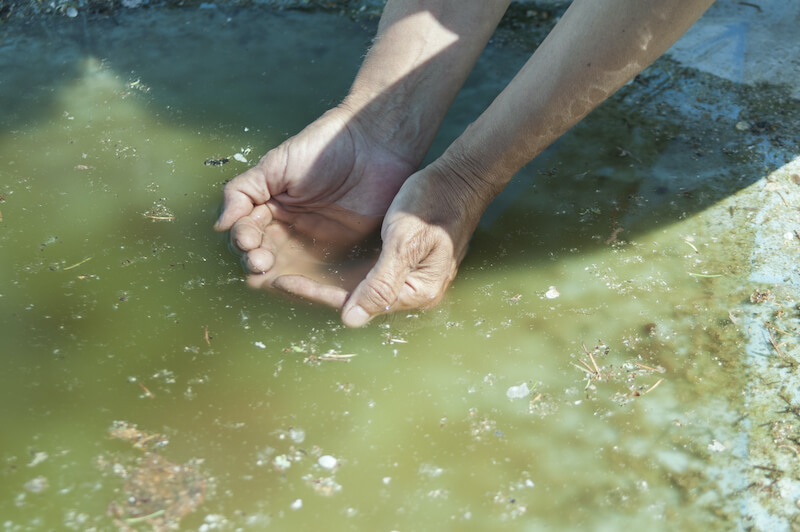
The Katadyn Water Bottle actually filters and purifies water as you drink it. It comes in several versions, ranging in price from reasonable to expensive.
You’ll also need replacement cartridges and filters, depending on the length of your trip.
Don’t think of this filtered water bottle as a one-time travel purchase: it could come in handy at other times. If your home water supply ever goes down for some reason or your area is affected by a natural disaster, you’ll be awfully happy you bought a quality travel water filter.
Before you use any purifiers, whether filters or pills or anything, make sure your water is as clear as possible. Use a T-shirt, a bandanna, a coffee filter, anything you can get your hands on.
Whatever you decide to buy, get a backup in case your primary travel water purifier fails.
And don’t forget to test your equipment before you go! You’ll want to know how it works, and if there’s a problem, you’ll be able to solve it in time.
WHAT TO LOOK FOR WHEN YOU’RE SHOPPING FOR WATER FILTERS OR PURIFIERS
Here are the criteria I’d use when shopping for a filter or purifier:
- Weight – the lighter the better
- Initial cost and running costs
- Availability of spare parts
- Does it remove viruses, bacteria and protozoa
- Is it easy to use
- Robustness
- Is it appropriate to your destination and length of trip – will you just need a filter for your hotel room tap or do you require a full system for a month of outdoor survival
- Consider the aftertaste and then decide how much of an issue this is for you
ALTERNATIVES TO DRINKING WATER
No water available?
You don’t have to die of thirst: drink reputable packaged fruit juices, sodas, sparkling water, or coffee or tea, since boiled water is safe. If you have a sensitive stomach, beware of freshly squeezed juices: they might be diluted with tap water, sugar is a breeding ground for bugs, hands and machines must be kept clean… not an easy task so I’d skip them if you’re uncertain.
As I traveled across Africa, there was one drink I found everywhere, and I mean absolutely everywhere: Coca-Cola (as long as you tolerate sugar, of course).
Beware of cocktails – they could have water, ice and those iffy fruit juices. You’ll be pleased to know wine, beer and spirits are safe when it comes to water (although dehydration and drunkenness could be side effects). Please note: alcohol drunk after ingesting dirty water will not retroactively kill bugs.
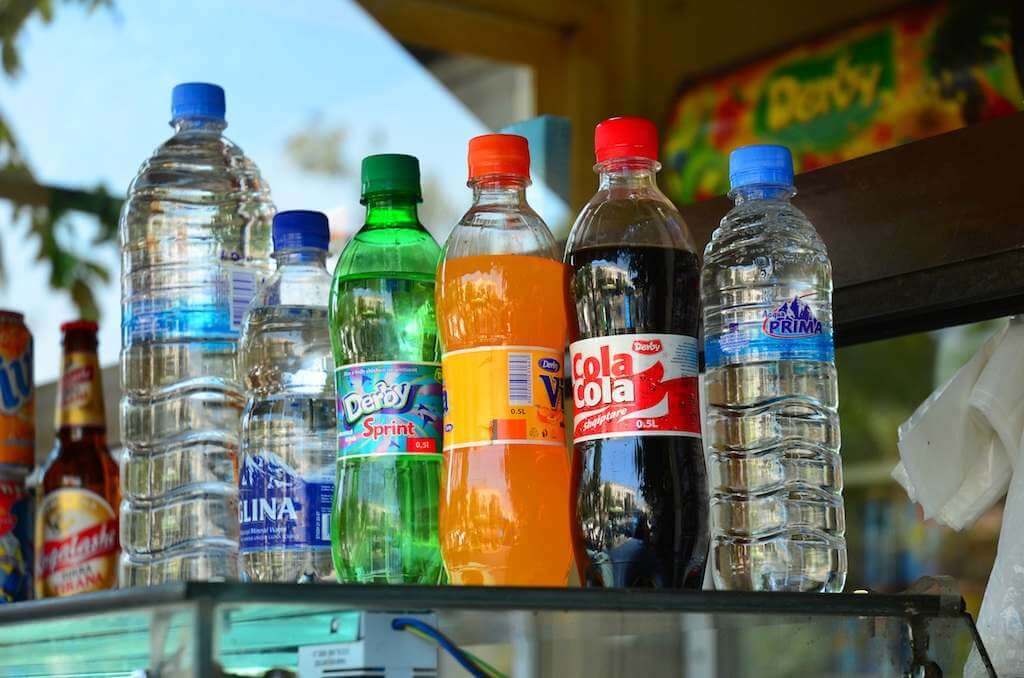
FOOD SAFETY ON THE ROAD
Don’t forget the issue of food when thinking of water; travellers diarrhoea can be caused by what you eat as well as what you drink.
Here are a few things to be aware of when traveling to destinations with water you can’t trust:
- Don’t wash fruits or vegetables with tap water – stick to foods you can peel.
- Remember the adage? If you can’t peel it, boil it, cook it or wash it – forget it!
- Avoid ice cubes – they’re almost always made of tap water; and don’t assume the snazziest hotels and restaurants are safe – they’re only as safe as the local water supply.
- Keep your mouth closed in the shower.
- Brush your teeth with bottled or purified water.
- If you’re in a region with bilharzia, don’t go swimming in freshwater.
- Keep your hands clean. Use sanitizer. Better to shake your hands than dry them on a dirty towel or use the hand dryer (loaded with bugs).
WHAT TO DO IF THE WORST HAPPENS AND THE WATER MAKES YOU SICK
So you’ve been careful – but you still got sick. It happens.
“Travelers stomach” is one of the most common travel health complaints. Some people seem to have cast-iron digestive systems and can get off scot-free no matter where they go or what they eat or drink. Others are not so lucky, and suffer from tummy issues even if they try to be super careful.
Not only is it possible to have toilet troubles during your travels, but you may also suffer from diarrhea after traveling. It is even possible to have travellers diarrhea after returning home, because some bugs may not make themselves known until weeks or even months later. If you’re feeling sick after traveling abroad, check in with your doctor in case you picked up a little extra souvenir on your trip; stomach problems after traveling are more common than you think.
What is travellers diarrhea caused by?
It can be hard to pinpoint exactly what caused your upset stomach. A number of viruses, bacteria, and parasites could be the culprit. While the most common ways of getting sick are by drinking contaminated water or eating contaminated food, poor hygiene – not washing your hands correctly, for example – can also be responsible.
Sometimes, it can be as simple as your stomach getting used to different methods of cooking or unfamiliar ingredients. At the other end of the spectrum, you could be dealing with something more serious.
Travellers diarroea treatments
So, you’re in the middle of an amazing trip in the back of beyond and suddenly, you’re stuck on the loo; what to do?
I’m not a doctor so I won’t give you medical advice BUT: if you get sick from water, take it seriously, especially in a hot, dehydrating climate.
How will you know if you’re sick because of unsafe drinking water?
You’ll probably develop nausea or vomiting, you may have a fever or diarrhea, and you might feel aches and pains, or stomach cramps.
If you’re lucky, your system will sort itself out without the need for any travelers diarrhea medication. But just to be safe, I recommend visiting a doctor before your trip to get some travelers diarrhea medicine to take with you.
If you don’t, don’t stress, you can usually find some travelers diarrhea medicine over the counter in even the most remote of places.
For some kinds of travelers diarrhea, antibiotics are needed.
If you can, get to a doctor right away. This is even more important if you’re older or have special health problems. (You DID get your travel health insurance, right?)
Many experienced adventurers have their own favorite travelers diarrhea treatment.
Self medicating can help if you’re planning a long bus or train ride. But there are no magical travel bug tablets that cure it all. The most commonly used to reduce diarrhea is Loperamide (also known as Immodium in some countries).
Not sure how to treat travelers diarrhea?
If getting to a doctor immediately isn’t an option, rehydrate! Drink plenty of clear fluids or better yet, use oral rehydration salts (ORT). I always carry a few packets when I travel, just in case, and in the mountains of Uganda, far from any health care, I nursed myself back to health with these.
No ORT? Don’t worry, the mixture is easy to make: take 1 liter – about 5 cups of bottled or sterilized water, and add 1 teaspoon of salt and 8 teaspoons of sugar. Drink it slowly, taking little sips. You can easily get these at your mountain or travel shop, or online.
A word of caution though – there is a lot of debate about ORT and like everything you can cause problems in trying to solve them. If there’s any possibility at all, get professional help.
NOTE TO DIABETICS: Some people who suffer from diabetes are concerned about the glucose in ORT. There are alternatives. However, health studies conducted on diabetic patients have concluded that ORT is safe for diabetics. Please don’t take my word for this and discuss it with your doctor if you have diabetes and are headed somewhere dehydration is common.
A final word: if you’re in the Alps or other pristine environment and you come across a crystalline stream, don’t assume the water is potable. A rat, mouse, fox or other animal may have peed in it further upstream. This could make you very ill so purify any water, or play Russian roulette with your health.
Need more information? Your health is important so check with a responsible health authority.
— Originally published on 10 November 2012
SHOP THIS POST ON AMAZON
PIN THESE PICTURES AND SAVE FOR LATER!
